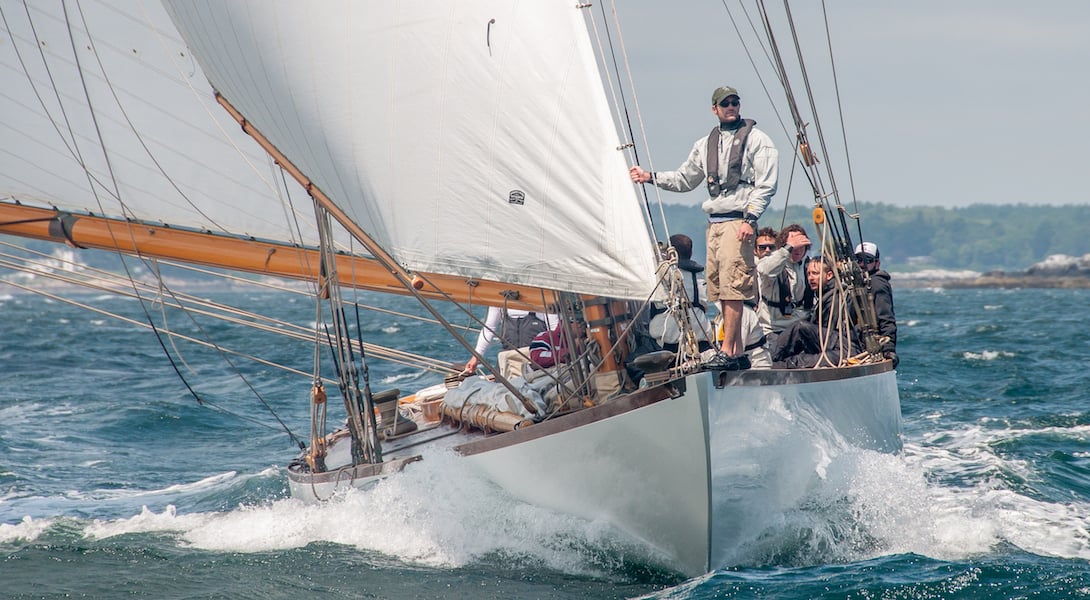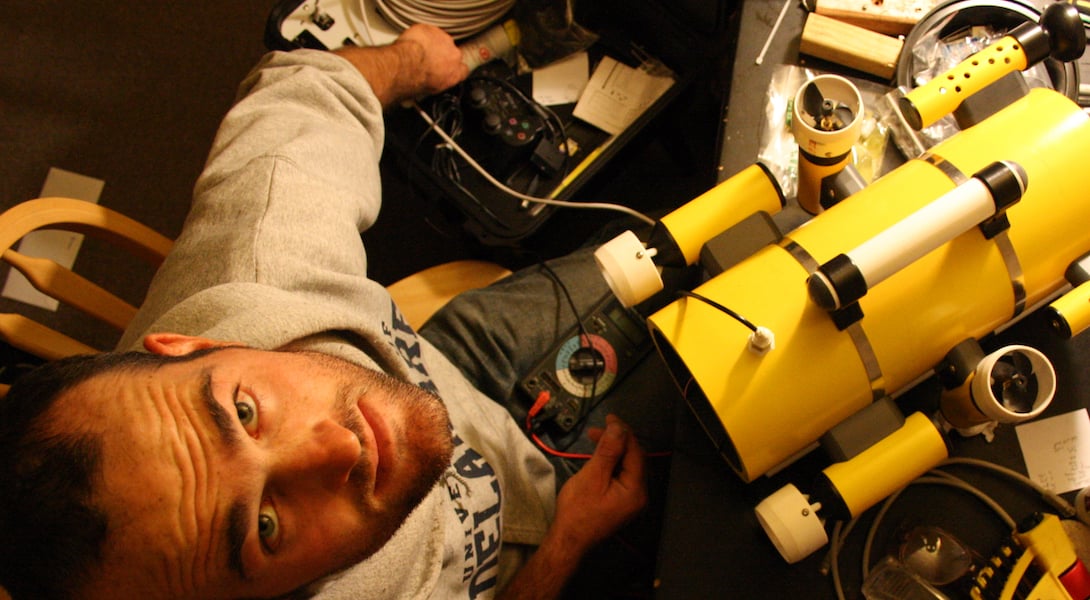Jonathan Wenderoth grew up on the water in Mystic, Connecticut before receiving his B.S. in Mechanical Engineering with a minor in Business from the University of Virginia. His engineering career began at a nuclear submarine reactor plant, with subsequent stints at a pharmaceutical machine design firm and a consulting product development firm in Boston before recently joining Essential.
1. What might people not know about you?
“I’ve always loved being around the water, and am happiest when I’m floating. Growing up, I always managed to acquire old and neglected boats that I would fix up and play with. Generally, there was a much higher ratio of fixing to playing, but that got me into sailboat racing where I’ve been fortunate enough to race in cool places around the world. When I’m not racing, I have more time to think about all the interesting things that might be beneath me, and that’s a whole other environment I enjoy exploring.”

Jon (foreground) racing as bow man with a team on the Herreshoff NY50 'Spartan'. Photo credit Bruce Durkee.
2. How do you draw on your experience building nuclear submarines in the work you do at Essential?
“While I’ve greatly appreciated my transition to product development, part of what makes our team valuable is the ability to draw from many diverse backgrounds. In my work with submarines, I was exposed to a very skilled set of workers who produced complex steel structures in less than ideal environments. While we don’t do much heavy metalwork, my time spent learning from these individuals and understanding their daily challenges laid the groundwork for much of the custom development I’ve been involved in since. Being able to learn, observe, and collaborate in order to reach the appropriate conclusions is critical in all industries, especially Essential’s.”

Jon deep into construction of a personal remote operated vehicle, designed and built to get a glimpse of inaccessible places underwater.
3. What tools and programs do you like to use in your daily work?
“Solid modeling aside, I really appreciate the capability of Excel, and being able to generate and iterate calculations as a project progresses. Similar to a good master model, putting some extra effort into the initial layout of a spreadsheet can really pay off, and even has the ability to facilitate future projects as a template. On the mechanical side, a good set of calipers is crucial for everything from teardowns to inspections. I always keep mine nearby, and use them almost as much as I use my pen. If you’re lucky enough to have access to a set of pin gauges, that is another one of my favorites. While metrology folks might cringe, pin gauges can be used for a lot more than just measuring holes - feeler gauges, depth setting on a drill press, alignment for fixtures on a mill bed, snap fit checks, you name it.”
4. You spend a lot of time creativity applying your technical knowledge to solve complex innovation problems. Do you enjoy any other creative outlets?
“While I often get to build or tear things apart at work, I enjoy working with my hands in my spare time too. I have always found woodcarving to be very relaxing, and have built a fair number of scale half-hull models of sailboats to hang around my house. After one of my water-based adventures left me with some very interesting wood remnants from a sunken ship, added another dimension of building models of the boats from their original material. Oftentimes, the wood is eroded, corroded, rotted, or full of barnacles, but that makes the final product very interesting.”

A half hull model Jon carved from salvaged pieces of a sunken ship.
5. If you could give aspiring engineers a single piece of advice, what would it be?
“What I would tell any aspiring—or current—engineer is fairly simple: stay curious! Basic engineering knowledge and principles come from courses and books, but some of the most useful information comes from observing and discovering new things from sources all around. My first reaction to getting something from the store isn’t to use it. It’s to figure out why the part was broken up into its discrete pieces, how each one might have been made, and what methods were used to assemble it. It doesn’t mean you have to take everything apart—although you still can. Even thinking through these questions builds a library of thoughts and ideas to reference when confronted with any number of challenges.”
Want to know more about Mechanical Engineering and Engineering Development at Essential Design?



